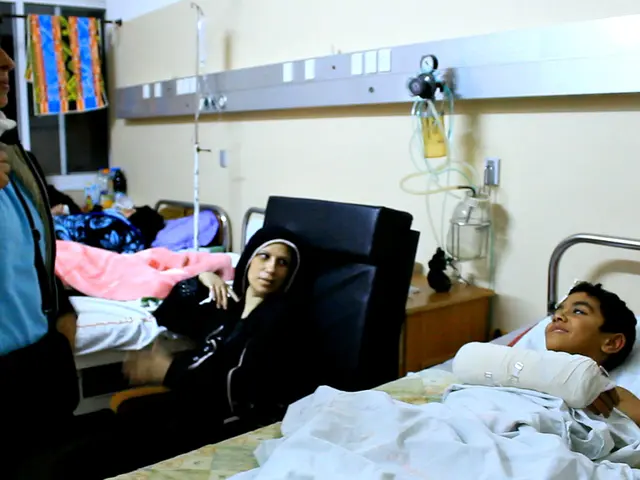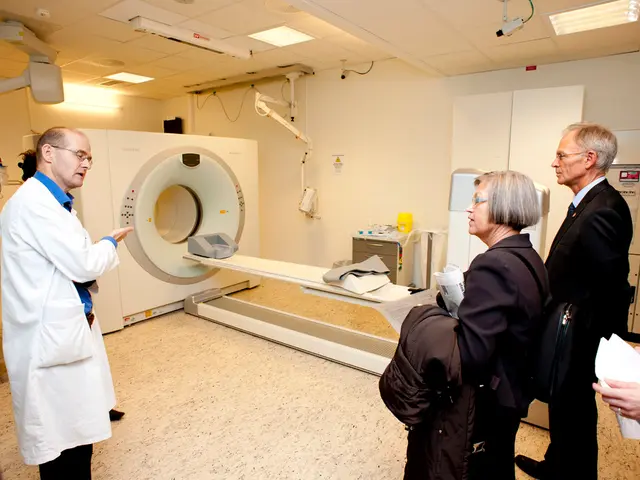Guide to Maintaining Brain Health Over Extended Periods: Long-Term Brain Maintenance Strategies
In the realm of human anatomy, few organs capture our fascination quite like the brain. This complex organ, responsible for our thoughts, emotions, and cognitive processes, is a marvel of nature's design. Let's delve into the main functions of the different parts of the brain.
## Major Lobes of the Cerebrum
The cerebrum, the largest part of the brain, is divided into four lobes, each with specific roles.
### Frontal Lobe Located at the front of the brain, the frontal lobe plays a pivotal role in motor control, speech production, decision-making, and emotional regulation. The primary motor cortex controls voluntary movements, while the premotor and supplementary motor cortices are involved in planning and coordinating movements. Broca’s area, crucial for speech production and language structure, is found within the frontal lobe. The prefrontal cortex supports executive functions, such as decision-making, working memory, and attention, and influences personality traits and emotional control.
### Parietal Lobe Near the center of the brain, above the ears, the parietal lobe is responsible for sensory processing, spatial awareness, and cognitive functions. The primary somatosensory cortex processes touch, pain, temperature, and body position, while the somatosensory association cortex integrates sensory input for perception and spatial awareness. Parts of the parietal lobe, like the angular gyrus, are involved in reading, number processing, memory, and attention.
### Occipital Lobe At the back of the brain, the occipital lobe is primarily responsible for visual processing, interpreting visual information from the eyes.
### Temporal Lobe On the sides of the brain, above the ears, the temporal lobe houses the auditory cortex, which processes sound and plays a role in speech recognition. The hippocampus, crucial for forming new memories, is located within the temporal lobe. Wernicke's area, important for understanding spoken language, is often found in the left temporal lobe.
## Other Brain Structures
### Cerebellum At the base of the brain, the cerebellum coordinates voluntary movements, maintains balance and posture, and is involved in learning new motor skills.
### Thalamus Deep within the brain, near the center, the thalamus acts as a relay station for sensory and motor signals to the cerebral cortex and plays a role in controlling consciousness and sleep.
### Amygdala Within the temporal lobe, the amygdala processes emotions, especially fear and anxiety, and is involved in associating emotions with memories.
## Brain Stem The brain stem, which consists of the midbrain, pons, and medulla oblongata, connects the cerebrum to the spinal cord and regulates basic functions like breathing, blood pressure, and heart rate.
In 2015, neuroscientists claimed they had created false memories in mice by stimulating the reward centres in their brains. This discovery underscores the complex nature of memory formation and the potential for further research in this area.
Maintaining a healthy lifestyle, including factors such as diet, exercise, social activities, and brain-stimulating activities, can help slow memory decline, even in people with genetic factors that make them more susceptible to dementia. As we continue to unravel the mysteries of the human brain, it's essential to appreciate and care for this remarkable organ that defines our very existence.
References: [1] Kandel, E. R., Schwartz, J. H., & Jessel, T. M. (2000). Principles of Neural Science. McGraw-Hill Education. [2] Paxinos, G., & Watson, C. (2007). The Rat Brain in Stereotaxic Coordinates. Academic Press. [3] Sherman, S. L., Guillery, R. W., & Cowan, W. M. (2006). The thalamus as a cortical relay: Mechanisms of thalamic influence on the cerebral cortex. Nature Reviews Neuroscience, 7(5), 345-357. [4] Swanson, L. W. (2000). The ascending cholinergic pathways of the brain. Journal of Comparative Neurology, 427(4), 353-371. [5] Zilles, K., & Amunts, K. (2004). The human brain atlas: Cytoarchitectonic regionalization of the cerebral cortex. Springer.
- The frontal lobe, found at the front of the brain, is involved in motor control, speech production, decision-making, and emotional regulation, with Broca’s area being crucial for speech production and language structure.
- The parietal lobe, located near the center of the brain, above the ears, is responsible for sensory processing, spatial awareness, and cognitive functions.
- The occipital lobe, at the back of the brain, primarily processes visual information from the eyes.
- The temporal lobe, on the sides of the brain, above the ears, houses the auditory cortex and the hippocampus, which plays a role in forming new memories.
- In 2015, neuroscientists stimulated reward centers in mice brains to create false memories, highlighting the complex nature of memory formation.
- A healthy lifestyle, including diet, exercise, social activities, and brain-stimulating activities, can help slow memory decline, even in those with genetic factors linked to dementia, emphasizing the importance of caring for this remarkable organ, the brain.




